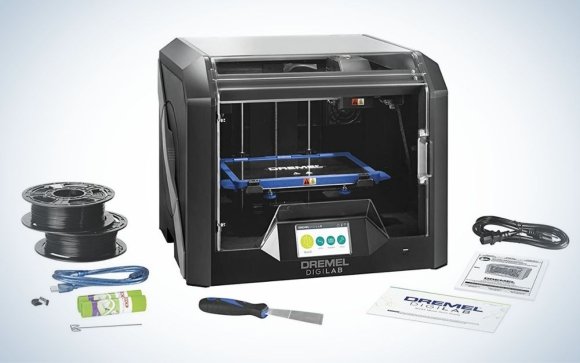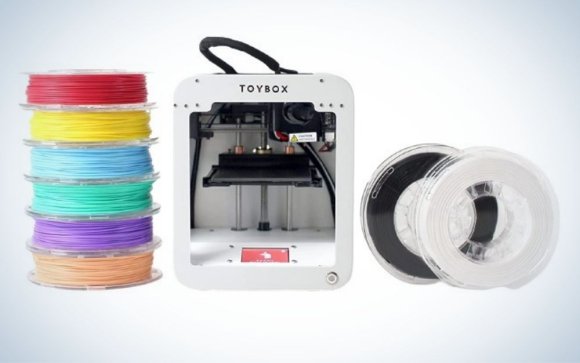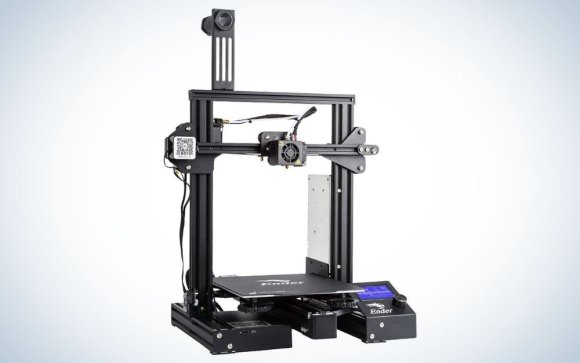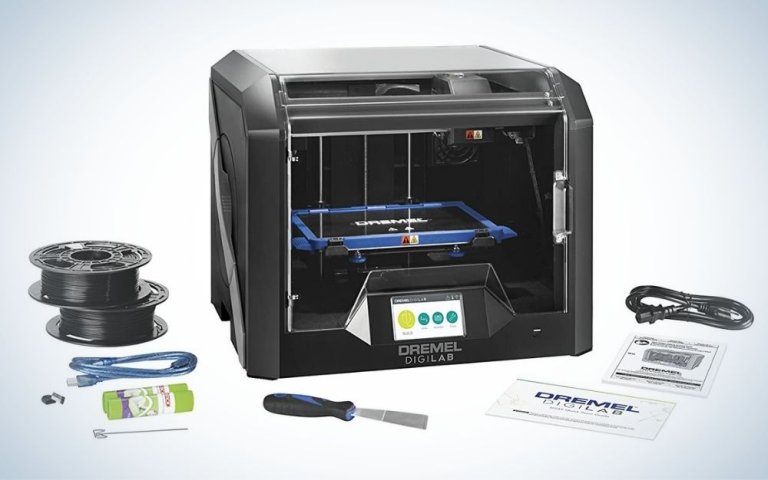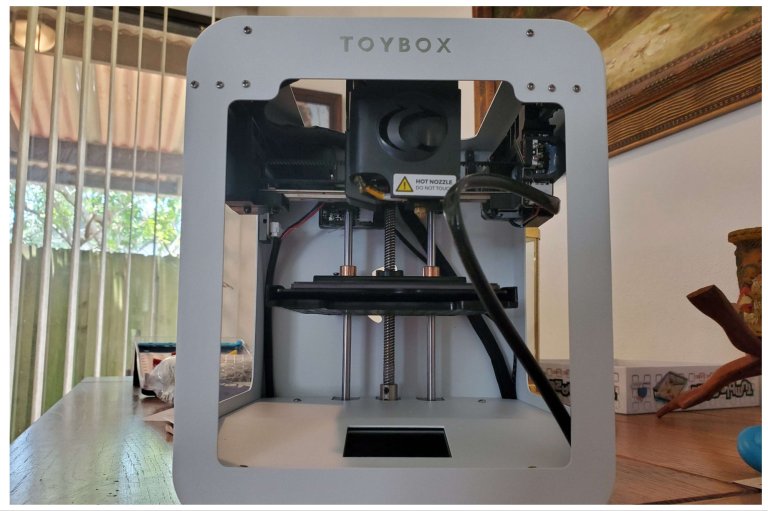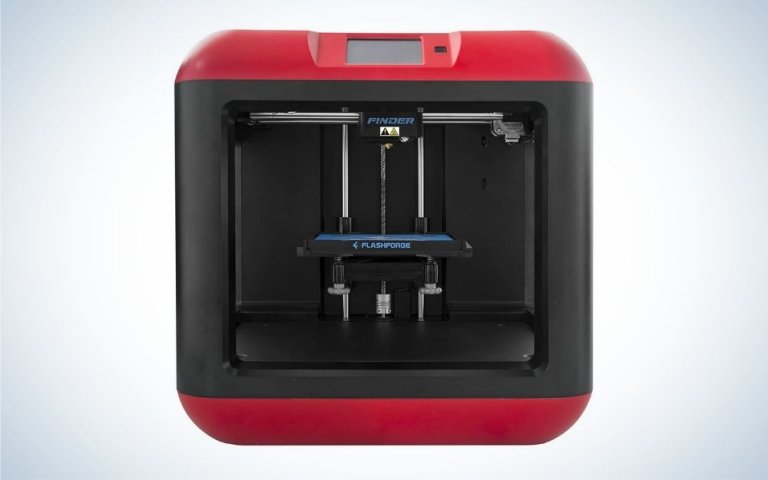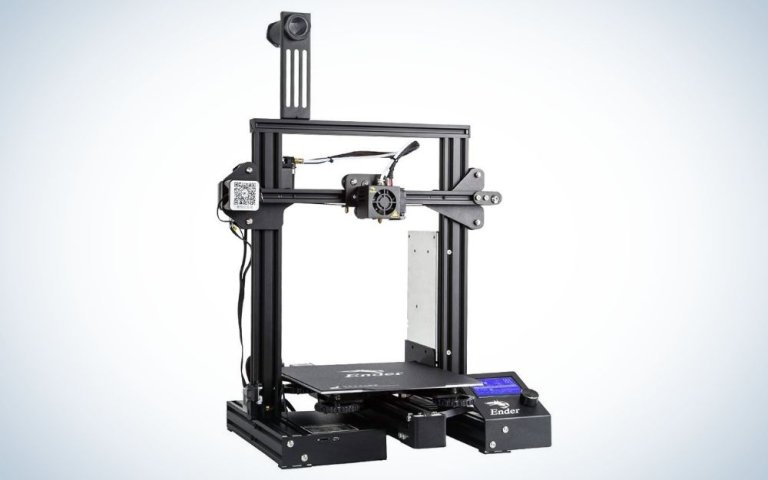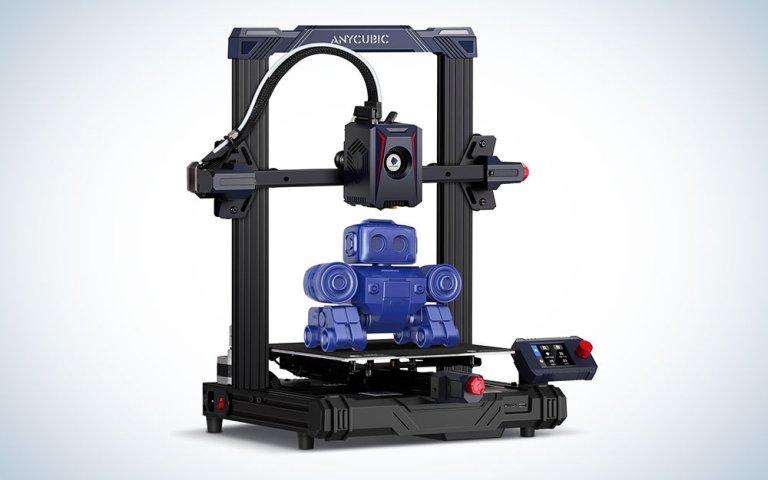We may earn revenue from the products available on this page and participate in affiliate programs. Learn more ›
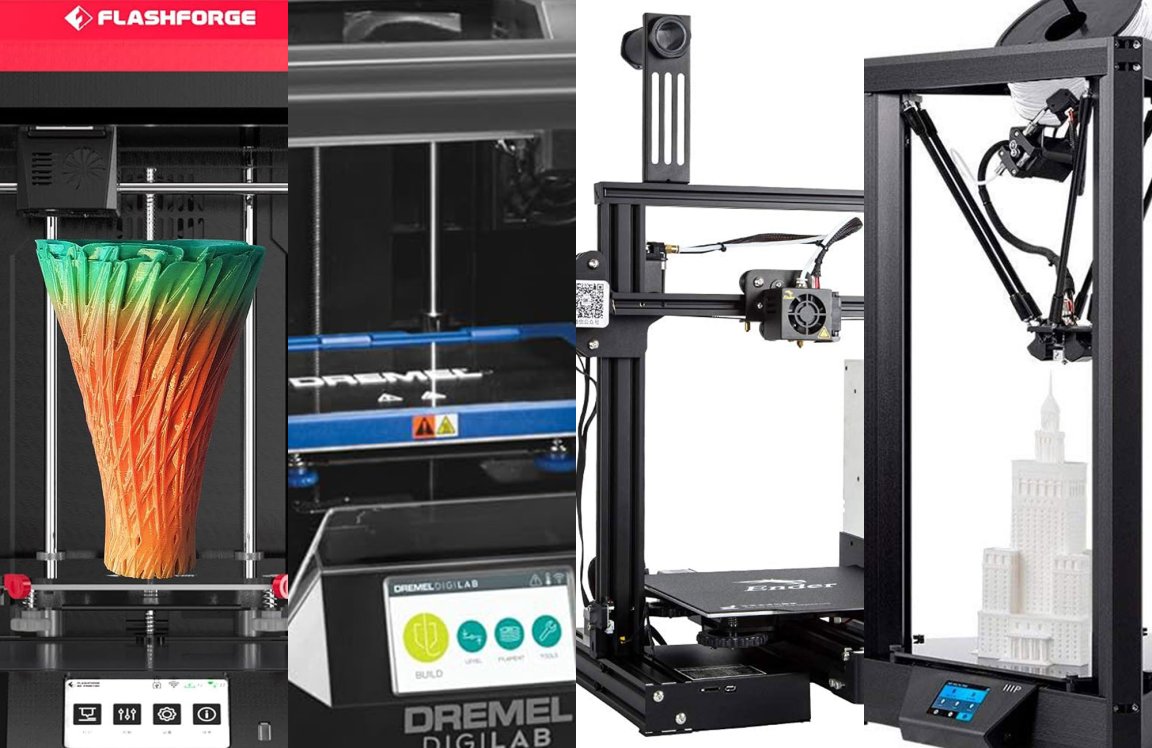
The 3D printer, when it first arrived, seemed right out of the future: you can create anything at all, crafted from a steady stream of plastic. However, it’s now an incredible way to make gifts, parts, and doodads in the present. Lost a chess piece? Print a new one. Need an adapter for the sink? Print one. The possibilities are endless. But sometimes, the choice of which model to buy can also feel endless. What features should you look out for? How do prevent this from becoming a temporary hobby that turns into a money pit? Will you have to worry about accidentally burning your house down or maiming a family member? Here’s how to find one of the best 3D printers for you in perpetuity sans personal hazard.
- Best overall: Dremel 3D45
- Best for kids: Toybox
- Best small: Flash Forge Finder 3
- Best professional: Creality Ender 3 Pro
- Best resin: ANYCUBIC Photon Mono X
- Best budget: ANYCUBIC Kobra 2 Neo 3D Printer
How we chose the best 3D printers
In coming up with our list of recommendations, we considered models from the leading makers of 3D printers. We looked for options that fit a range of circumstances, from beginners to pros. Ease of assembly, versatility, build volume, and price also figured into compiling our list of the best 3D printers.
The best 3D printers: Reviews & Recommendations
One of our picks should help you unlock your creativity. And while you’re waiting for your 3D printer to arrive, stock up on the best 3D printer filaments.
Best overall: Dremel 3D45
Fantastic Clarity
See ItPros
- Designed for commercial use
- Comes with an intuitive touchscreen
- Has a built-in HD camera that allows for remote printing
Cons
- Expensive
Specs
- Build volume: 6.7 x 10x 6 inches
- Weight: 42.8 pounds
- Compatible materials: Nylon, ECO-ABS, PETG, PLA
Why it made the cut: This award-winning 3D printer works with a range of materials and is a favorite of architects, engineers, and beginners alike.
Dremel’s 3D45 printer is at the top of the heap for home 3D printers. It’s right on the line between a home 3D printer and a professional printer, but what allows it to claim this title as the best home 3D printer is its impressive software and ease of use. It relies on a version of the open-source Cura software, with a nice big touchscreen, which makes it surprisingly simple for beginners, given the extremely high print quality. It’s also one of the best enclosed 3D printers you can buy. It’s a splurge, but it’s worth the price if you’re serious about 3D printing.
Best for kids: Toybox
One-Touch Operation
See ItPros
- Easy to use
- New toys added to catalog every day
- Uses non-toxic and compostable PLA
Cons
- Expensive
- Smaller build space
Specs
- Build volume: 7 x 8 x 9 centimeters (2.7 x 3.1 x 3.5 inches)
- Weight: 6.6 pounds
- Compatible materials: PLA plastic
Why it made the cut: This easy-to-use 3D printer comes with a catalog of more than 1,000 toys for kids to create.
Depending on age and experience, kids and teens may prefer a typical, “adult-centric” 3D printer. But the Toybox (which we have thoroughly reviewed) is designed for younger kids, with lots of safety options (like non-toxic materials) and a super easy-to-use app for selecting and printing all kinds of fun toys. And those toys can be for kids of all ages, as this is a great 3D printer for gaming miniatures.
Best small: FlashForge Finder 3
Stellar Design
See ItPros
- Can use right out of the box
- Glass platform is removable
- Quiet and small
Cons
- Only works with Linux
Specs
- Build volume: 190×195×200 millimeters
- Weight: 34.39 pounds
- Compatible materials: PLA, ABS, HIPS, PETG, PETG PRO, TPU
Why it made the cut: This compact printer is easy to assemble, quiet, and has good build volume for its size.
The FlashForge Finder 3 is a well-priced, diminutive 3D printer that doesn’t skimp on the features. Its leveling system guides you through the oft-annoying process of ensuring the built platform is aligned properly. Plus, the build plate slides right out, which makes removing your printed object much easier. It also boasts a touchscreen for easy operation, and the build platform is designed to be cold, for safety reasons. It’s a great 3D printer for all kinds of activities, like prototyping accessories for cosplay.
Best professional: Creality Ender 3 Pro
Fully Open
See ItPros
- Comes semi-assembled
- Magnetic printing bed that allows for easy product removal
- Aluminum extruder proves extra stability.
Cons
- Not designed for beginners
Specs
- Build volume: 8.66 x 8.66 x 9.84 inches
- Weight: 2.2 pounds
- Compatible materials: PLA, ETG, ABS
Why it made the cut: This high-end printer is an upgrade from the last model, with an aluminum extruder for stability and a magnetic printing surface that allows users to remove models more easily.
The Creality Ender 3 Pro is known for its high-quality prints, and the company does a great job of leading owners through the assembly process. It’s fully open-source, and there are lots of options for upgrading individual parts later, which makes it a great base for learning about 3D printing. It’s also surprisingly affordable and a great 3D printer under $500. It isn’t the easiest 3D printer to use, but if you’re building a printer yourself, that’s likely okay with you.
Best resin: ANYCUBIC Photon Mono X
Pros
- Premium feature set
- Reasonable price
- Very fast
Cons
- Not as easy to use as entry-level models
Specs
- Build volume: 192mm x 120mm x 250mm
- Weight: 22.4 pounds
- Compatible materials: Resin
Why it made the cut: The ANYCUBIC Photon Mono X offers the best vital features per cost of any consumer-grade resin 3D printer out there.
If you’re looking for the best overall bang for your buck in the resin 3D printer space, the ANYCUBIC Photon Mono X is your ticket. ANYCUBIC is an extremely well-known manufacturer in the space, and there are plenty of online tutorials on how to use its devices on enthusiast forums like Reddit.
The Mono X’s feature set is a cut above the usual suspects in the 3D printer game. At 7.5 inches by 4.7 inches by 9.8 inches, the Mono X’s build area is more than big enough for any miniature you’re likely to want to build, except maybe Cthulhu. It also offers fast speeds, 4K resolution, and better Z-axis support than similar models.
Best budget: ANYCUBIC Kobra 2 Neo 3D Printer
Tiny But Mighty
See ItPros
- Easy to use
- Small footprint
- Affordable
Cons
- Heavy
Specs
- Build volume: 8.7 x 8.7 x 9.8 inches
- Weight: 16 pounds
- Compatible materials: PLA
Why it made the cut: Autolevel takes the worry and guesswork out of making something new.
As far as affordable 3D printers go, we love the ANYCUBIC Kobra 2 Neo 3D Printer. It’s cheap but includes higher-end features like auto-leveling. Linear propulsion and input shaping functions give you smoother, sharper prints. It’s perfect for beginners but is a great match for more experienced makers. It’s a best value if you want the most bang for your buck.
What to consider when buying the best 3D printers
Today’s offerings are generally designed for two markets: home and office. Home 3D printers tend to be more affordable—lately, some of the best beginner 3D printers have been getting down under $300, which is a far cry from the thousands they used to cost. These are great for toying around with, teaching yourself (or your kids) modeling software, and seeing what kinds of crazy stuff you can create out of seemingly thin air.
Professional 3D printers are much more expensive but show the full capability of this moment in time in the 3D-printing world. Architects can quickly build out perfect scale models. Manufacturers can skip the entire go-to-the-factory tour and spit out a prototype in minutes.
Luckily, some of the best home printers are also some of the least expensive 3D printers. After all, the needs of a home user are not quite as particular as a professional in an engineering lab. That doesn’t mean you’ll be skimping on features, though; these 3D printers, no matter how affordable, can do some truly amazing stuff.
Some of the professional 3D printers require some experience with CAD design—yes, we know, the “D” stands for design already—software, which can feel overwhelming for newbies. But there are plenty of machines that are beginner-friendly, enabling you to download designs and print them right out.
Setup
The best home 3D printers—meaning, not a professional system designed for businesses—are typically smaller, ideally a bit cheaper, and hopefully, come pre-assembled. Home 3D printers should be able to connect via a simple USB cable to your computer, although WiFi connectivity is a nice option to reduce the amount of cord clutter around your home.
Resolution
You’ll also want to look at print resolution. This metric is measured in microns, and the smaller the number is, the sharper the image. The resolution of 3D models is important to 3D printing. You can think about it like you’re building out of LEGO blocks: if you only use a few larger blocks, you’ll have a very blocky, rough sculpture. But use a lot of smaller blocks, and you can create more natural-looking curves and shapes. For a home 3D printer, look for around 50 microns in resolution.
Assembly
Many 3D printers, including the Prusa i3, come in two versions: one is pre-assembled, and one, for a discounted price, requires assembly by yourself. In general, we don’t love the assembly-required versions, as they can be very finicky and tricky to put together. This isn’t quite an Ikea couch; these gadgets are complex, and any errors in construction can totally mess up your final prints.
Once you go down into the less expensive units, you often won’t find any assembly-required options at all. These are more grab-and-go printers, designed for ease of use, and frankly, we like that. Especially because using these printers as an educational toy for kids is one of their best attributes, and the assembly is often too difficult for them. Instead, grab a kid-friendly, pre-assembled unit.
Size
3D printers can vary in size from a small shoebox to, well, literally house-sized. The smaller 3D printers are often a great option for those with a limited amount of desk space, or perhaps for those with no need to print anything all too large.
Price
Given that many 3D printers can cost thousands of dollars, you’d be forgiven for looking at a less expensive printer with some suspicion. You’ll definitely be sacrificing something, but the nice thing about cheap 3D printers is that you can choose what you want to give up. Are you okay with a slightly lesser printing resolution? Or would you rather sacrifice how large the printed objects can be? Or do you want to build the printer yourself, opting for more barebones kits to save some cash? All of those are possibilities.
Kits
If you want to get in the weeds, and we’d understand if you do, a 3D printer kit is a great way to both save some money and start to understand the intricacies of how these machines work—because you’ll have to build them.
It’ll take you a few hours to put these kits together, but there are tons of helpful tutorials on YouTube, and you’ll get the same kind of satisfaction that you might get from working on a car. If something goes wrong, you’ll know what, because you constructed the entire project. And the rewards for creating something that then creates something else? It’s fun wrapped in a riddle.
Open-frame vs. closed-frame
An open-frame 3D printer doesn’t have an outer shell like close-frame 3D printers do. An open-frame 3D printer is perfect if you don’t have to worry about dust, temperature fluctuations, or interference from children and/or pets. A closed-frame, or enclosed, 3D printer prevents all of the above. Open-frame 3D printers are often cheaper than closed-frame 3D printers.
Build volume
The build volume is how much space you have to print an object. A larger build volume lets you print larger objects. You can’t print your object completely if your build volume isn’t large enough for what you want to print. Build volume is listed in Cartesian form (x, y, z). Generally, look for 12 inches in one of the dimensions and 6-12 inches in the other two.
FAQs
Whether a 3D printer is worth it depends on your use case. They’re great educational tools, and can be really fun toys, too: it never gets old to download some plans and then have them manifest as a physical object, right there at home. They aren’t necessarily practical for home use, in that you’re not going to be printing too many high-end sculptures or tools, but if you know that going in, you can really enjoy yourself.
It depends on the kind of printer you have. And, some companies include maintenance as part of the initial price, or with an extended warranty or annual service plan. Maintaining a 3D printer shouldn’t cost more than $100 per year, based on the models we mention.
If you maintain and replace parts, your printer can last between 5-10 years. Regular cleaning and adjustments can help with 3D printer lifespan.
Final thoughts on the best 3D printers
- Best overall: Dremel 3D45
- Best for kids: Toybox
- Best small: Flash Forge Finder 3
- Best professional: Creality Ender 3 Pro
- Best resin: ANYCUBIC Photon Mono X
- Best budget: ANYCUBIC Kobra 2 Neo 3D Printer
The best 3D printers—home printers, 3D printers for kids, detail-oriented kits, or even budget-friendly options—can be truly mind-blowing home gadgets. It’s incredibly satisfying to watch these machines spool plastic with such precision, creating something that you want seemingly out of thin air.
